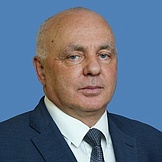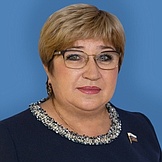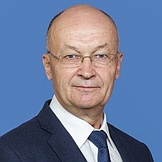Regional flags and emblems


PROFILE
Established 14 August 1944
Capital Vladimir
The Vladimir Region is part of the Central Federal District
Area 29,100 sq km
Population 1 295 900 (2025)
Ethnic groups
(2020 National Census, %)
Russian – 95,76
Other – 4,24
Administrative divisions (2024)
Municipal districts – 16
City districts – 5
Rural towns – 27
Rural districts – 79
Geography and climate
The Vladimir Region lies in the central part of the East European Plain and borders the Moscow, Ivanovo, Nizhny Novgorod, Ryazan and Yaroslavl regions. The city of Vladimir is located 154 kilometres northeast of Moscow. The Klyazma River cuts through the Vladimir Region, dividing it into two almost equal parts. More elevated areas that cover over a third of the region’s territory extend to the north of the river, while the sprawling northern part of the Meshchyora Lowland is to the south of it.
The climate in the region is temperate continental with warm summers and moderately cold winters and persistent snow cover throughout the season. The average temperature in January is –10,7°C, in July +17,3°C. Mean annual precipitation: 550 mm. Forests, including shrubs, cover over 54% of the territory and agricultural land about 34% of the territory. There are 91 animal species, including 29 mammal species and 62 bird species that can be legally hunted in the region. Hunting grounds occupy an area of 2,207.5 K ha. There are valuable fish species in the Oka and Klyazma rivers, such as sterlet and barbell sturgeon, which are included in the Red Data Book of the Vladimir Region. Meshchyora National Park, the Muromsky Wildlife Refuge and the Klyazminsky Wildlife Refuge are the region’s three protected nature areas that are overseen and funded by the federal government.
Government
The legislative branch is represented by the Legislative Assembly of the Vladimir Region, which is the permanent, representative and only legislative body of state authority in the region.
The Legislative Assembly of the Vladimir Region consists of 40 deputies, who are elected for a term of five years. 25 deputies are elected in the single electoral district proportionately to the number of votes cast for the lists of candidates nominated by electoral associations; and 15 deputies are elected in single-mandate constituencies.
The current deputies of the Legislative Assembly were elected in September 2023; their term in office will expire in September 2028.
The Vladimir Region’s executive branch is led by the supreme executive body of the region – the Government of the Vladimir Region. The executive branch is represented by the Governor, the Government of the region, and other executive agencies of the region.
The Governor of the Vladimir Region is the region’s highest-ranking official, who runs the executive branch of the region, determines its structure, forms and heads the Government of the region. The Governor is elected for five years by Russian citizens who permanently reside in the region. The incumbent governor’s term in office will expire in September 2027.
Economy and natural resources
The leading sector of the economy is industry, which accounts about 40% of the regional GDP.
The region’s main industries include the manufacturing of electric, electronic and optical equipment, machines and equipment and non-metallic mineral products; metallurgy and production of finished metal products; the chemical industry; the production of rubber and plastic products; food industry (including beverages); textile and the clothing industry; the manufacturing of vehicles and transport equipment; woodworking and wood products; the pulp-and-paper industry; the publishing and printing industries; and leather processing and leather goods and footwear production. The main industrial centres are the cities of Vladimir, Kovrov, Aleksandrov, Raduzhny, Kirzhach and Gus-Khrustalny.
The Vladimir Region’s agricultural sector meets almost two-thirds of local consumer demand for beef and 100% for milk, potatoes and eggs.
The agricultural sector focuses on breeding cattle for meat and milk. Among the developing industries are cattle breeding, pig and sheep breeding, poultry farming and fish farming. Horse breeding (the Vladimir Heavy Draft) and beekeeping are traditional for the region. Regional enterprises also grow wheat, rye, barley, buckwheat, sunflowers, beans, as well as vegetables, cucumbers and potatoes.
Factors that make investment in the region attractive include the diversified economy, opportunities to invest in various businesses and the developed road and railway infrastructure (by these indicators, the Vladimir Region ranks among Russia’s best-performing regions). The Legislative Assembly of the Vladimir Region has adopted a package of laws on measures to attract more investment in the region, including tax benefits, government guarantees, and subsidies from the regional budget.
Culture and tourism
The Vladimir Region is one of Russia’s oldest historical and artistic centres. In the old days, the area it occupies was the heart of the Vladimir and Suzdal Principality and, since the end of the 18th century, of the Vladimirskaya Gubernia [Province].
One of the popular Golden Ring itineraries runs through the region.
The region is famous for old Russian cities, such as Aleksandrov, Vladimir, Gorokhovets, Kideksha, Murom, Yuryev-Podolsky and Gus-Khrustalny, and their architectural, historical, cultural and religious landmarks. The city of Suzdal, an old centre for Orthodox Christian pilgrimage, features the Aleksandrovsky Monastery, the Intercession Convent, the Saviour Monastery of St Euthymius, the Monastery of Deposition of the Robe of Virgin Mary and a unique architectural and landscape landmark – the Church of the Intercession on the Nerl River in Bogolyubovo.
The Vladimir school of architecture influenced the architecture of Moscow and other Russian cities. There are several outstanding landmarks that were influenced by Vladimir and Suzdal architecture of the 12th and 13th centuries, such as Dormition Cathedral and Cathedral of St Demetrius, both of which were built of white stone, as well as the Golden Gate and the Church of Intercession on the Nerl River.
Meshchyora National Park, a major protected nature area, is a popular place for tourism and recreation, including kayaking, skiing, walking, bicycling, hunting, angling and picking mushrooms and berries, as well as enjoying some peace and quiet by the waterside.
There is the Puzhalova Gora downhill course in Gorokhovets and skydiving centres at the Kirzhach, Aleksandrov and Semyazino airfields. Sports that are popular in the city of Kovrov are motorcycling, karting, paintball, car trials in local swamps and diving in the deep lakes of the Balakhninskaya Lowland.



